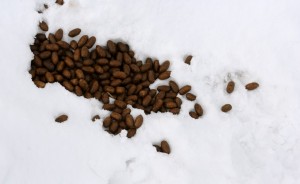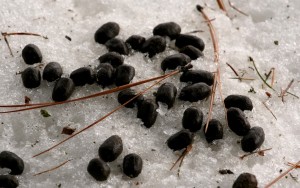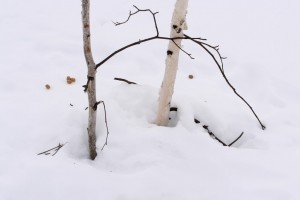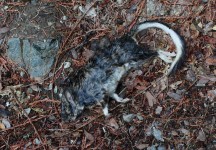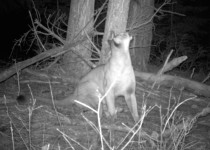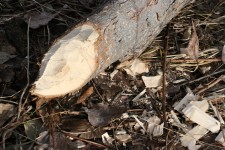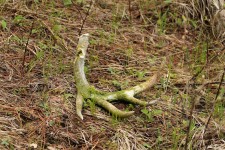Hardly a trip into the woods goes by without an encounter with animal droppings–otherwise known as scat, excrement, feces or poop. Sometimes all that is warranted is quick glance at deer pellets or moose nuggets, while other times a stop is needed to inspect them. Scatology, the study of animal droppings, if not for the squeamish–you do have to look closely but not necessarily touch them.
Animal droppings can contain parasites, so it is best not to handle them with bare hands. For the curious, a stick works well to dissect the droppings.
Scat is a valuable clue to which animals are around, especially when tracks aren’t visible. Though a combination of tracks and scat makes identification easier since not all scat is easy to identify.
The scat’s shape is the first clue to what family the animal might belong to. Teardrop or tapered scat is characteristic of the cat family while fattened threads characterize the weasel family. Oblong scat, sometimes with a nipple at the end, characterize the deer family while round pellets indicate rabbits and hares. Tubular, tapered scat characterizes foxes while just tubular scat covers a wide variety of animals, including canines, raccoons, skunks, opossums, wolverines and bears.
Scat can provide clues to an animal’s diet and help distinguish between different animals depending on their diet characteristics. Coyote scat is highly variable every day because they are opportunistic omnivores, meaning they eat whatever is available. Coyote scat may contain hair, bones, fruit or berries while domestic canine scat usually doesn’t contain hair. Wolf scat will contain hair and bones that can indicate what animal it came from–long hair implies a rabbit or deer while short hair suggests a smaller mammal. Fisher scat resembles mink scat but is larger and may contain porcupine quills, since they are the main predator of porcupines.
An animal’s diet can easily change the color, shape and contents of its scat. The familiar winter moose nugget becomes softer in the summer because of the switch from woody browse to succulent vegetation. Deer also follow this pattern from hard pellets to softer pellets that can clump into a rather large ball in the summer. Similarly, bear scat becomes a loose pile of berries during huckleberry season.
The location of scat provides another clue to its owner. Foxes are known to deposit their scat on prominent objects, such as rocks and stumps, to mark their territory. Muskrats do the same thing but their prominent objects are closer to the water, such as logs, rocks and beaver structures. Likewise, raccoons deposit scat in prominent areas (crotch of trees, rock outcroppings or fallen trees) and several raccoons may deposit scat at the same site. Due to a raccoon’s omnivorous diet, their scat may contain berries, insects, fruits and fish parts.
Scat can also provide clues to an animal’s behavior. Snowshoe hares defecate one pellet at a time, so if they are on the move the pellets will be strung out but if the pellets are in a pile, it indicates the hare was stationary, possibly at a feeding spot. Animals tend to leave scat in areas where they feel safe, which is why there is often numerous deposits of scat near deer beds in dense woods.
Members of the cat family tend to scratch out the area around where they defecate, which can help identify their segmented, blunt-ended droppings. The larger the droppings the larger the cat (bobcat versus mountain lion).
While size may be a clue for some species, the size difference may not be as large as you might expect. Think of the difference in size between rabbit pellets and deer pellets compared to the difference in physical size of the animal.
While it may be easy to dismiss a pile of animal poop, a wealth of knowledge can be gleaned from the lowly scat if you just stop to look.

